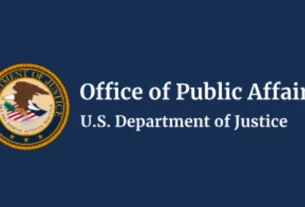With the election fast approaching and the possibility of possible change, one group is keeping a close eye on things: college students and recent graduates. With student loan debt reaching astronomical levels—over $1.7 trillion—it’s no wonder that many students are anxious about potential shifts in policies, particularly those related to loan forgiveness.
The Context
For years, student loan forgiveness programs have been a beacon of hope for those burdened by debt. Initiatives like Public Service Loan Forgiveness (PSLF) have promised relief for borrowers working in nonprofit or government jobs, while broader proposals for blanket forgiveness have sparked heated debates. However, with the possibilities of the political tides shifting, students are increasingly worried about what changes could mean for their financial futures.
Why the Anxiety?
1. Uncertainty in Policies
With every new administration, students wonder if the next wave of leaders will keep or scrap loan forgiveness programs. Recent discussions have highlighted potential cuts to existing programs or changes in eligibility, which only adds to the uncertainty. For students who’ve made financial decisions based on the expectation of forgiveness, any shift could feel like a betrayal.
2. Political Division
The political landscape in the US has become more polarized, and student loan forgiveness is one of those hot-button issues that divide opinions. Some see it as a necessary step towards equity, while others view it as a burden on taxpayers. This division creates an environment of anxiety, where students feel like their financial future is a bargaining chip in political games.
3. Fear of Rising Debt
Many students are already grappling with high debt loads. The idea of not having any safety net through forgiveness programs makes the prospect of accumulating even more debt feel even scarier. For those considering grad school or specialized training, the thought of entering the workforce with additional loans and no relief in sight is daunting.
What Students Are Doing
In light of these concerns, students are taking various approaches to safeguard their interests:
1. Staying Informed
Students are actively educating themselves about current policies and proposals. Social media platforms and student advocacy groups are buzzing with information, making it easier to stay updated on any changes. Knowledge is power, and many students want to be prepared for whatever comes next.
2. Advocating for Change
Many students are also becoming more politically active. They’re reaching out to lawmakers, participating in rallies, and joining organizations that advocate for student debt relief. This grassroots movement is a way for students to make their voices heard and push for policies that support their needs.
3. Exploring Alternatives
Some students are exploring alternatives to traditional student loans, like scholarships, grants, and income-share agreements. By seeking out different funding sources, they aim to minimize their debt burden and the potential impact of any policy changes.
Conclusion
As the conversation around student loan forgiveness continues to evolve, students find themselves in a state of heightened anxiety. The fear of losing potential relief is real and palpable. However, by staying informed and engaged, they’re not just passive observers; they’re becoming active participants in shaping their future. As the landscape of student debt continues to change, one thing is clear: students will fight for the relief they need to build a brighter financial future.
What is increasingly clear is that students have a say and a very powerful voice in deciding their future, however what is unclear is how they would choose to use that leverage.



